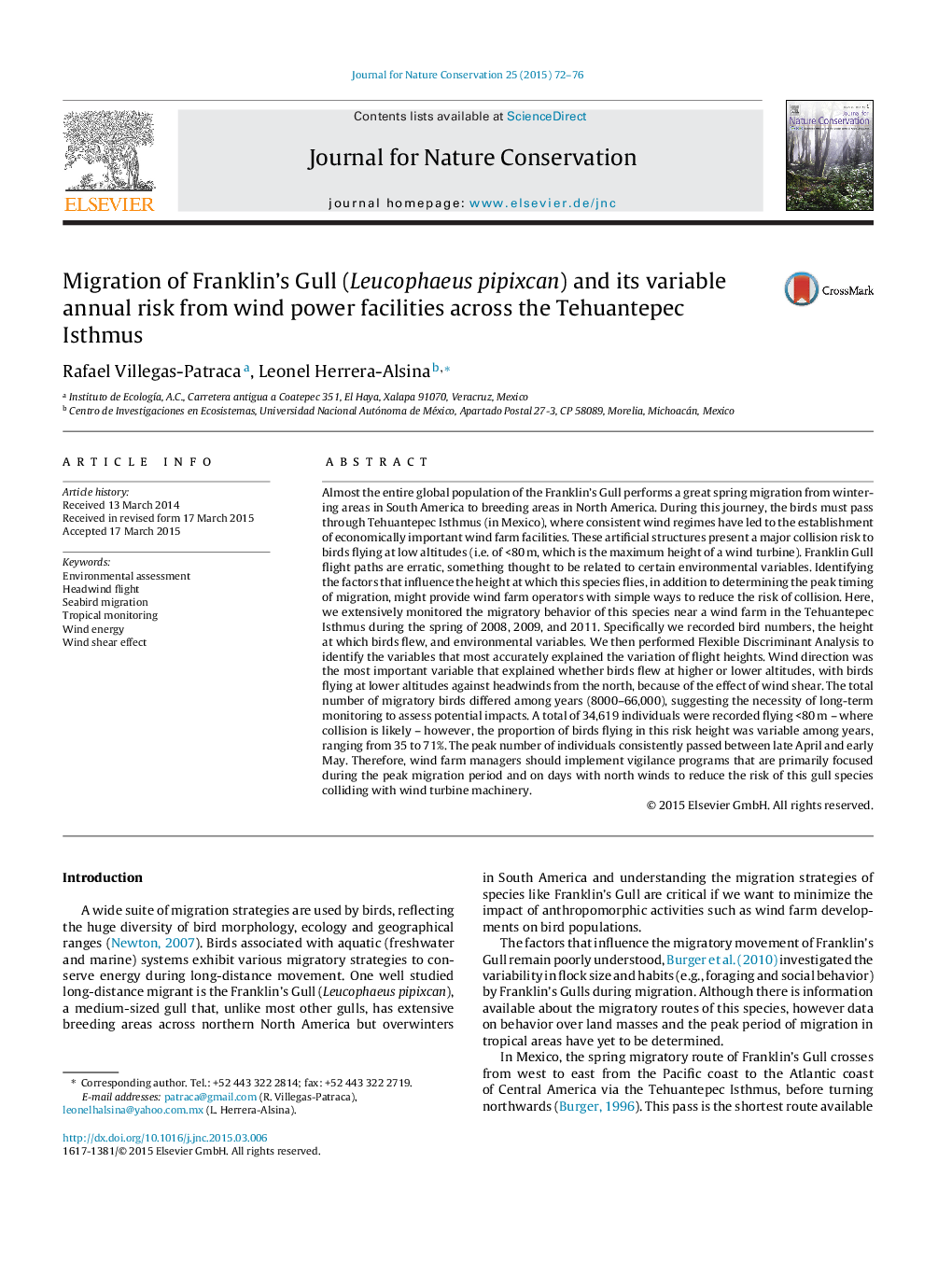| کد مقاله | کد نشریه | سال انتشار | مقاله انگلیسی | نسخه تمام متن |
|---|---|---|---|---|
| 4399775 | 1618543 | 2015 | 5 صفحه PDF | دانلود رایگان |

Almost the entire global population of the Franklin's Gull performs a great spring migration from wintering areas in South America to breeding areas in North America. During this journey, the birds must pass through Tehuantepec Isthmus (in Mexico), where consistent wind regimes have led to the establishment of economically important wind farm facilities. These artificial structures present a major collision risk to birds flying at low altitudes (i.e. of <80 m, which is the maximum height of a wind turbine). Franklin Gull flight paths are erratic, something thought to be related to certain environmental variables. Identifying the factors that influence the height at which this species flies, in addition to determining the peak timing of migration, might provide wind farm operators with simple ways to reduce the risk of collision. Here, we extensively monitored the migratory behavior of this species near a wind farm in the Tehuantepec Isthmus during the spring of 2008, 2009, and 2011. Specifically we recorded bird numbers, the height at which birds flew, and environmental variables. We then performed Flexible Discriminant Analysis to identify the variables that most accurately explained the variation of flight heights. Wind direction was the most important variable that explained whether birds flew at higher or lower altitudes, with birds flying at lower altitudes against headwinds from the north, because of the effect of wind shear. The total number of migratory birds differed among years (8000–66,000), suggesting the necessity of long-term monitoring to assess potential impacts. A total of 34,619 individuals were recorded flying <80 m – where collision is likely – however, the proportion of birds flying in this risk height was variable among years, ranging from 35 to 71%. The peak number of individuals consistently passed between late April and early May. Therefore, wind farm managers should implement vigilance programs that are primarily focused during the peak migration period and on days with north winds to reduce the risk of this gull species colliding with wind turbine machinery.
Journal: Journal for Nature Conservation - Volume 25, May 2015, Pages 72–76